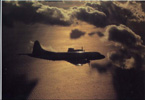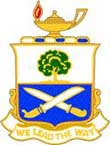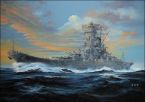jwilkerson
Posts: 10525
Joined: 9/15/2002
From: Kansas
Status: offline

|
quote:
ORIGINAL: Apollo11
<snip>
Are there any info on Japanese homeland AA at all?
Leo "Apollo11"
Here is a start - the OB.
===============
AAA Regiments: 1 thru 26, 33, 34, 40, 101 thru 104, 111 thru 118, 121 thru 125, 131 thru 135, 141, 152, 171 ( 19 of these are identified as being "in Japan" )
TO&E included 16 75mm "Heavy" AA guns
===============
AA Defense Regiments 1(Japan), 41(Korea), 51(Formosa), 52(Formosa)
TO&E included 16 "Heavy" 75mm AA guns
===============
AAA Units
Rangoon, Manila, 15, 19, 20, 21 ( none of these are in Japan - they are company or battery sized units with an estimated 100 men ... so probably 4 "heavy" AA guns at most )
===============
Field AA Defense Units
11 thru 20 ( none of these are in Japan - they are company sized < 100 men ... so probably 4 "heavy" AA guns at most )
===============
AAA Regiment Replacement Units
1 thru 6 and 8 ( not sure whether these had any guns .... TO&E manpower is 1800+ ... they would've mostly been in Japan ...
===============
Independent AAA Bns ( included 8 x 75mm guns each )
1, 2, 3, 6, 12, 25, 27, 31, 34, 41, 42, 43 ( 6 are listed as in Japan )
===============
Independent AA Defense Bns ( included 8 x 75mm guns each )
1, 2, 11, 12, 21, 25, 31, 32, 51 ( 5 are listed as in Japan )
===============
Field AAA Bns ( included 12 x 75mm in type A and type B units and 18 x 75mm in type C units )
31 thru 41, 44 thru 84, 89, 94 ( none of these are listed as being in Japan )
===============
Independent AAA Companies ( included 4 x 75mm AA )
1,2,3,11,12,13,21 thru 25, 31 thru 35, 41 thru 45, 51 ( 13 of these are listed as being in Japan )
===============
Independent Field AAA Companies ( included 4 x 75mm AA )
21 thru 31, 33 thru 51, 53, 54, 58, 59, 60, 61, 62, 63 ( 2 of these are listed as being in Japan )
===============
Totals:
19 x 16 = 304
01 x 16 = 016
06 x 08 = 048
05 x 08 = 040
13 x 04 = 052
02 x 04 = 008
Total = 468
This includes Army units only ( not Navy ) but we have to start somewhere ... and this does not include numerous "machine cannon" units which were only light flak ( nor the light flak components of the above listed units ) and I haven't seen seen data on production figures for either 75mm AA or 105mm AA ... and last but not least, the above units have relatively few "dates" associated with them .. but certainly the OB was not static throughout the war ... some units were disbanded and some were first created ... I have of that data .. but doubtly all of it.
Source: Underwood ( reprinting Madej, "Japanese Armed Forces, Order of Battle, 1937-1945 ( 2 vols ), Game Publising Company, Allentown PA 1981 )(Note that essentially Madej just reprints documents from the US archives which are either caputed enemy records and or records produced by the military during or shortly after the war )
_____________________________
AE Project Lead
New Game Project Lead
|
 Printable Version
Printable Version






















 New Messages
New Messages No New Messages
No New Messages Hot Topic w/ New Messages
Hot Topic w/ New Messages Hot Topic w/o New Messages
Hot Topic w/o New Messages Locked w/ New Messages
Locked w/ New Messages Locked w/o New Messages
Locked w/o New Messages Post New Thread
Post New Thread